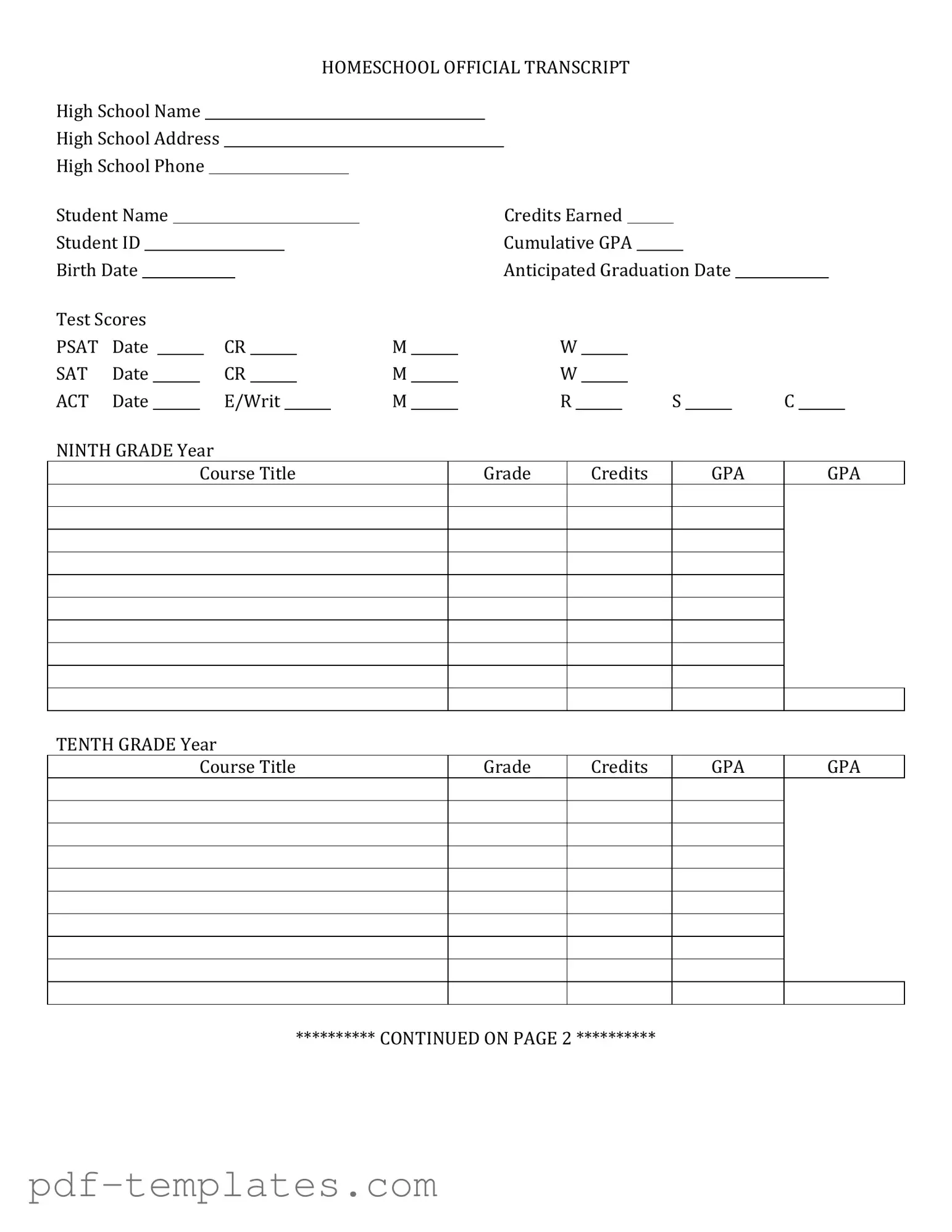The High School Diploma is a document that certifies a student has successfully completed their high school education. Much like a transcript, it provides a formal acknowledgment of academic achievement. While the transcript details specific courses and grades, the diploma serves as a culmination of that effort, marking the end of a student’s high school journey. Both documents are essential for college admissions and employment opportunities, as they validate educational accomplishments.
The California Motor Vehicle Power of Attorney form is a legal document that allows a car owner to appoint someone else to handle specific tasks related to their vehicle on their behalf. This can include registering the vehicle, signing documents related to the sale, and other actions that would normally require the direct involvement of the owner. It's a powerful tool for those who need to delegate these tasks due to absence or incapacity. For more information about such documents, you can refer to All California Forms.
The College Transcript is similar to a high school transcript but pertains to post-secondary education. It lists all the courses taken, grades received, and credits earned at a college or university. Just as a high school transcript reflects a student’s performance over four years, a college transcript provides a comprehensive view of a student’s academic history in higher education. Both documents are critical for transferring schools or applying for advanced studies.
A GED Certificate serves as an equivalent to a high school diploma for those who did not complete traditional high school. Like a transcript, it indicates that the individual has met specific educational standards. The GED provides an alternative pathway for students, showing that they possess the knowledge and skills equivalent to those who graduated from high school. Both documents can open doors to employment and further education.
The Academic Record is a broader term that encompasses various educational documents, including transcripts and diplomas. It provides a complete overview of a student’s academic history, including grades, attendance, and sometimes even extracurricular activities. Like the high school transcript, the academic record is often required for college applications and job opportunities, as it reflects a student’s dedication and performance over time.
The Report Card is a document issued periodically throughout the school year, summarizing a student’s performance in individual subjects. While it is not as comprehensive as a transcript, it shares similarities in that it provides grades and feedback on academic progress. Both documents help students and parents understand educational achievements and areas needing improvement, contributing to overall academic development.
The Letter of Recommendation is a personal endorsement from a teacher or counselor, often required for college applications. While it does not provide grades or courses, it complements a high school transcript by offering insight into a student’s character, work ethic, and potential. Together, these documents present a well-rounded picture of a student’s qualifications and readiness for higher education.
The Application for Admission to college or university often requires a high school transcript as part of the submission process. This application form collects personal information, academic history, and extracurricular activities. The transcript serves as a verification tool, confirming the information provided in the application. Both documents are crucial in the admissions process, helping institutions evaluate candidates based on their academic performance and achievements.
The Financial Aid Application is another important document that often requires a high school transcript. When students seek scholarships or grants, they must demonstrate their academic performance. The transcript serves as proof of their educational background, while the financial aid application assesses their eligibility for assistance. Both documents work together to support a student’s pursuit of higher education.
The Resume is a personal summary of a student’s skills, experiences, and achievements. While it differs from a transcript in format and purpose, both documents highlight a student’s qualifications. A resume may reference academic achievements listed on the transcript, providing context for educational accomplishments. Together, they help students present themselves effectively to potential employers or educational institutions.
The Certificate of Completion is awarded to students who finish a specific program or course of study, often in vocational or alternative education settings. It serves a similar purpose to a high school diploma or transcript, validating that the individual has met the necessary requirements. This document can be essential for entering the workforce or pursuing further education, just as a high school transcript is critical for college applications.
